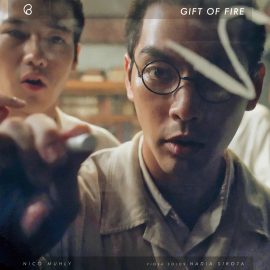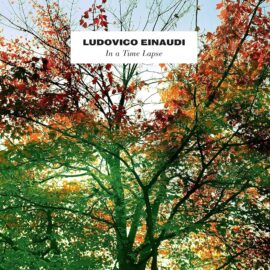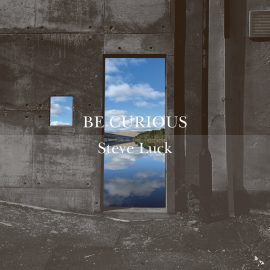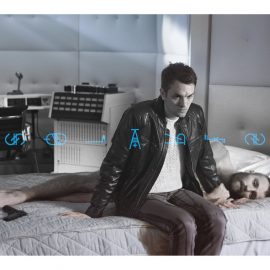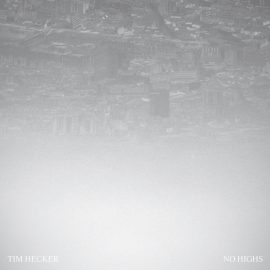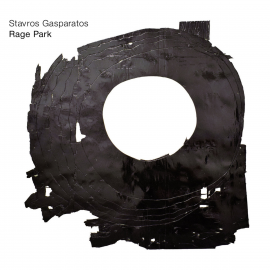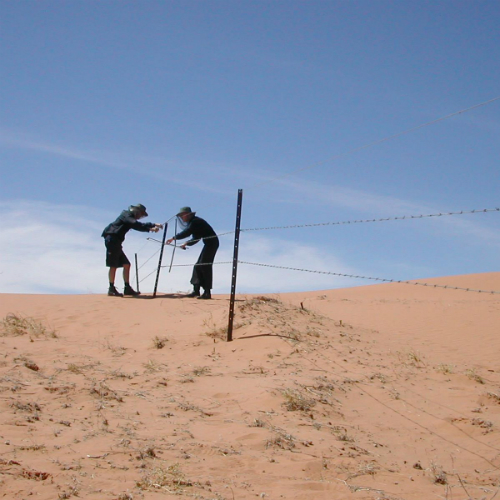
Steve Elkins is a former private investigator, drummer for The Autumns, and author of “The Grammar Of Fire,” his true recount of being asked to lead a riot in the largest slum in India. He is currently at work on his second documentary film, which explores how different cultures approach the unknown by struggling to visualize the invisible through either machines or the human body. His film, “The Reach of Resonance“, features John Luther Adams, Miya Masaoka, The Kronos Quartet and Bob Ostertag. The film explores music not as entertainment or self-expression, but as a tool to develop more deeply meaningful relationships with people and the complexities of the world they live in. It currently remains unavailable to the general public – check Screenings on the film site to see if you can catch it in your area.
What was the spark for investigating sound and performance art?
It was really numerous threads from my life that coalesced half-consciously over time. To take one at random: when I was in my late teens / early 20s, I used to get into long, intense debates about the nature of music with friends. They usually started after I shared some piece of music that had a profound impact on me, and they responded by saying something like “Is that even music?”, or come right out and say, emphatically: “That is not music!” I’ve found this to be a common reaction to a lot of the music that most deeply moves me, a reaction that haunts me to this day. Not because I think others should share my tastes or conceptions of what music is; in fact, I think it’s a testament to the transformative power of music in our lives that no one can come up with a definition of it that circumscribes each person’s relationship to it.
But what strikes me is that the gesture of saying “This is not music” is very different from simply not liking the music. It is a way of dismissing entirely the unique life experiences of a person that led to their particular emotional response to a sound. It illuminates a boundary which someone is unwilling to cross to engage with the intimate life experiences of another human being, to grant them a valid presence, a speaking role, in their life. In other words, I think that when we define something as being music, or not music, it is much more than an opinion. It is part of the process by which we define ourselves and our relationships with others.
And I think that when we create these borders at the edges of our experience where we sift out and discard what we perceive as “noise” from that which we invite into the narrative of our lives to open us up and maybe even transform us, we bump into a process that not only shapes us as individuals, but shapes every arena of society: politics, religion, science, culture, history, technology, etc. My increasing suspicion that music can be spy-hole into how these forces work, an epistemological magnifying glass into how we relate to others and create the societies we live in, was a conviction I could not shake. It led to seven years of work that became “The Reach Of Resonance.”
What are your thoughts on this form of music?
Well, I’ve never thought about it as “performance art” (the term you used in your first question), and I don’t think my film is about a “form” or “type” of music that can be easily lumped into some definable category. And this is important to me, because I want to draw a listener’s attention to that moment when they encounter music that cannot be easily described, codified, or recognized as part of a tradition and reflexively label it “experimental”, “avant-garde,” or “noise.” Because I think John Zorn really nailed it when he said that the moment we use words like these to categorize music – whether it’s “rock”, “jazz”, “punk”, “dada”, “beat”; or “isms” like “surrealism”, “minimalism”, “abstract expressionism,” etc – we stop using terms of understanding. We start using the language of money. These words are used to commodify and commercialize an artist’s complex personal vision, so that it’s easier for an audience to buy it and for a critic to respond with prepackaged opinions. They reinforce the personal and cultural entanglements that condition the way a person listens.
But there are non-verbal catalysts that open us up in ways that words simply can’t. A friend of mine once said, “You can argue with words, but you can’t argue with an act of love.” I think that music, like love, is one of those catalysts. It can mysteriously open closed borders inside us, and take us out of ourselves. The tension some people have to confront when they initially perceive a piece of music as noise may put a spotlight on what can cause that moment of transition, and that’s partially what my film is about. Rilke once said that he believed almost all our sadnesses are moments when we no longer hear our surprised feelings living. To keep them alive is what I hope for in music as much as life, and maybe that’s the most concise thought I can give you about the music I’ve been investigating.
What do you find important when it comes to documenting documenting this music?
I think it tells us a lot about who we are. We are as defined by what we push to our peripheral vision as by what we embrace. And we need voices sounding from our margins to wake us up to how we limit our world and what it could be. Tim Hodgkinson put it this way: “the culture of a society is in the first place a propaganda directed at its incoming members, its children, in the form of how they will be closed in to the world as that culture imagines it.” Artists are border dwellers, uniquely positioned to remind us where we’ve allowed the paint to dry on our experience of the world and people around us. I wanted to circumvent the cliche narrative that so-called “radical,” “fringe,” or “avant garde” art is merely a rebellion against the shared values of tradition and mainstream culture. I see it as a call for a deeper sense of community, for us to be more inclusive, patient, sensitive, and better listeners. I wanted to make a film that thought seriously about making and listening to “noise” as a process of compassion, not one of subversion, and find a language to communicate this to those who may otherwise have been denied this understanding within the vocabulary of mass culture.
Does the music in your film carry a higher social significance than conventional music? I’m bringing about the example of Adams listening stations and the playing of borders, as documented in the film.
No, I don’t think so. I think the social significance of art is in the way it transforms people internally, and all music has this potential, whether it’s John Luther Adams, Fela Kuti, New Kids On The Block, or Bolt Thrower. No matter how much a piece of art purports to be “about” important social issues, it will only be as socially significant as the audience makes it by the degree to which they carry it into their lives. The responsibility is really on the audience, and in this sense they are also performers.
When I first started working on “The Reach Of Resonance,” I was focused on investigating what you might call the “social significance” of certain musical practices, but in a different sense. For example, I wanted to probe whether improvising music in front of an audience provided unique insight into the thinking patterns and habits of people, and the ways they either challenge or ignore the personal struggles of themselves and their fellow musicians. I think I perceived all this at the time as a way of lifting a veil to reveal some underlying truth about people.
At a certain point, I became pretty interested in John Zorn’s game pieces as a demonstration of this. These are complex systems he devised for spontaneous composition by carefully selected groups of musicians on stage that were at first based on sports (Lacrosse, Hockey, Pool, Fencing, etc) then evolved into systems based on war games. I only have a cosmetic understanding of how they work, since the rules are handed down as an oral tradition, but one aspect of them is that any member of the group can change or take control of the dominant musical paradigm in effect at any moment by the use of hand gestures or file cards that instruct the conductor (known as the prompter) or other musicians. There are guerilla systems that enable a player to become a renegade and play as they choose, or take on compadres who lay musical landmines as sabotage. There are squad leaders who can call for operations like musical fencing with other players, and whose cohorts have the duty of watching out for a spy and stop them with a covert throat slitting gesture to the prompter. There are then systems of tactics that can be used to determine who did it. In a way, the musical development is always being determined by the most least patient person at any moment.
In the early stages of making my film, I thought this could be one exciting way to investigate certain social dynamics underlying musical communication, especially since Zorn emphasized that his game pieces are a way of making music that’s not about the “composer,” it’s about people and relationships. He stressed how important it is to carefully select a kaleidoscope of personalities that are aggressive, passive, humorous, and even assholes, because, in his words: “I basically create a small society and everybody finds their own position in that society. It really becomes like a psycho drama. People are given power and it’s very interesting to see which people like to run away from it, who are very docile and just do what they are told, others try very hard to get more control and more power. So it’s very much like the political arena in a certain kind of sense. Some players are really kind of conceptual, thinking about structuring a piece of music, using these signals and trying to create some kind of compositional flow in their heads spontaneously. While others are, you know, creating problems… those are all valid positions to be in in the society that exists on stage when these pieces happen.”
Although I did meet Zorn in New York City, I never interviewed him. There’s actually an interesting documentary that came out while I was making mine called “A Bookshelf On Top Of The Sky” which is partially about the difficulties of making a film about Zorn. This film is structured on the inherent problems of believing you can know someone through their art, or have any special access into their inner life through it. It’s an interesting counterpoint to the direction I was going, and I basically agree with everything Zorn has to say about this. Nevertheless, I held on to my interest in how one’s musical thinking may reflect a person’s “total reaction upon life” (to borrow William James’s description of religion), but it came out in a different way once the film was finished.
What is the shared musicality of all the artists? In what is the aesthetic they share?
Pauline Oliveros once speculated that we may one day be able to implant a “musician chip” into our bodies, which will enhance our capacity to be musicians. This means we need to know what a musician is, so that we’d know what should be encoded on such a chip. She hoped her chip would include the ability to perceive the interdependence of all people and life as the basis and privilege of music making. I would say that is one shared musicality of the artists in my film. They are sensitive to the ripple effects of certain relationships that most of us, consciously or unconsciously, ignore. And use sound to bring them to life in our nervous systems, in case we (like them) will not be able to react to the world quite the same way again.
What is your background with the form?
Mostly self education by going to lots of concerts and taking chances purchasing rare albums in underground record stores. My awareness of many of the musicians that wound up in my film was through a truly incredible person, Dean Rowan, who I met while I was working at a coffee shop as a teenager. He was studying to take the bar exam, not to become a lawyer, but so he could become a better librarian! He never had a tv… his living room consisted of a couch facing a pair of speakers, which he used to explore his absolutely massive collection of vinyl, 8-tracks, CDs, you name it, literally thousands of titles from ancient music to biker metal to extreme noise. At one point, he had to construct a separate building in his backyard to store it all. After he moved near Berkeley, I would often drive from Los Angeles to visit him and stay up all night drinking his favorite obscure micro brews while he introduced me to one life changing record after another. I began contacting some of the musicians from our listening marathons to interview them. My film was carved out of seven years of those interviews, though I discovered many musicians other ways as well.
Where can this form evolve?
One of the most compelling perspectives I’ve heard on this topic was articulated by Robin Fox, when I was in Australia filming an interview he was doing with ABC Radio. He was talking about how he had to try to define “experimental music” in his thesis, and came across Warren Burt’s idea that you can think of it as “advanced marketing research.”
Although at first, that seems counter-intuitive, it got me thinking about how the music made by African slaves in the American colonies was routinely described as “noise” by their masters, and yet it engendered nearly all the music now considered to be our most sacrosanct indigenous art forms: gospel, blues, jazz, rock, hip hop, and countless hybrids. Nels Cline once told me that he never thought musique concrète would be commercial, but hip hop made it “top 10” within his lifetime thanks to sampling. When I was a kid, punk and metal were perceived as a threatening noise of rebellion by the marginalized who loved it and the mainstream that hated it, but now those are two of the biggest commercial mass markets in music. I mean within my short lifetime, metal went from being branded as evil by major religions to being one of the major musical expressions of its own faithful. Looking further back, the organ was originally banned from the Christian church for hundreds of years after its invention because believers heard it as the devil’s instrument, but eventually, they embraced it as the voice of their most sacred music.
What these kinds of gestalt switches indicate to me is that music can tell us a lot about the nature of perception. And that what we perceive as “noise” and the sacred are easily interchangeable. This change tends to happen in the span of a single generation now. I suspect that aspects of the music I’ve been documenting will inevitably become absorbed into popular culture and not questioned anymore. A lot of the technologies developed by artists in my film that were perceived as “weird” and “esoteric” twenty years ago are now used by virtually everyone in their phones. But wherever new institutions need to be questioned, new “noise” is likely to emerge. And the beauty is that we can’t predict where or how that will happen. That geography will change as our relationships to each other change.
steveelkins.net | reachofresonance.com
Interview by Patrick Miller exclusively for Headphone Commute
